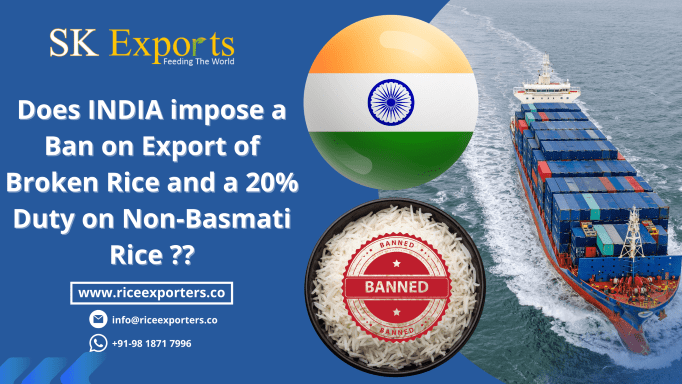India imposes a ban on export of broken rice and a 20% export duty on non-Basmati rice. The regulations are applicable across the country. The regulations were introduced in the year 1955 to protect domestic production and consumers against adulteration or resale of inferior quality rice by unscrupulous traders. India has one of the world’s largest reserves of arable land, which provides ample scope for the cultivation of different types of rice. However, India is limited to produce only one variety of rice – Basmati which accounts for more than 80% of total Indian rice exports. The ban on exporting broken/unmilled rice and a 20% export duty on non-Basmati rice have also been introduced to protect farmers from falling prices and to help them increase their income through cultivation rather than selling their produce at distress prices or not even at that price due to oversupply in the market.
What is broken rice?
Breakeven (or break-even) price is the price at which the farmer earns the same income by producing that quantity of a commodity as he does by producing an additional quantity. At breakeven price, the additional profit is zero. Rice is harvested and husked, then re-husked, and finally broken and milled. Rice is wet milled only if it goes through a series of processes that involve removing the outer layers of the grain. Wet milling is the final step in the process of rice production. Most of the rice grown in India is polished rice, or hulled rice. In India, rice is grown in four stages, from transplantation to milling. The first stage is transplantation, in which the rice seeds are planted in water-filled trays for about six weeks so that the seed grows roots. The second stage is growth, during which the rice plant grows in the water tray and absorbs water and nutrients. The third stage is ripening, in which the rice plant is harvested and dried. The last stage is milling, after which the rice is polished.
Why India imposes a ban on export of broken rice?
India imposes a ban on export of broken rice to protect domestic producers from adulteration or resale of inferior quality rice by unscrupulous traders. The ban is applicable across the country. The regulations are applicable across the country. The regulations were introduced in the year 1955 to protect domestic production and consumers against adulteration or resale of inferior quality rice by unscrupulous traders. The government of India has imposed a ban on export of broken rice and a 20% export duty on unmilled rice, which have been introduced in the year 1955 to protect domestic production and consumers against adulteration or resale of inferior quality rice by unscrupulous traders. The rice industry in India relies primarily on exported rice to meet domestic demand and also to meet the considerable export demand. For example, in 2015-16, 55% of total rice production in India was exported. Exporting unmilled rice generates more revenue for the government, whereas exporting broken rice is barred by the government of India to protect domestic production.
What is an unmilled rice?
Unmilled rice is the raw rice that is not broken before it is packed into bags or containers. Unmilled rice must be cooked before it can be eaten. Unmilled rice is not processed by removing the husk, polishing the rice, or changing the composition of the rice. The highest quality unmilled rice is a rice with a 2% broken rice content. Lower quality unmilled rice can have a 5-10% broken rice content. Higher quality unmilled rice has grains that are smaller, with less bran and less flavor.
Why India imposes a 20% export duty on unmilled rice?
The export duty on unmilled rice is introduced to promote the local production of unmilled rice, which is the staple diet of the people of the Indian subcontinent. The government of India has imposed a 20% export duty on unmilled rice to promote the local production of unmilled rice, which is the staple diet of the people of the Indian subcontinent. The government of India has imposed a 20% export duty on unmilled rice to promote the local production of unmilled rice, which is the staple diet of the people of the Indian subcontinent. The local production of unmilled rice is promoted by imposing a 20% export duty on unmilled rice because the local farmers produce unmilled rice, and the imported unmilled rice is more expensive and loses more money in the market.
Import of unmilled rice under the import quota
Unmilled rice under the import quota is imported from countries where there is a shortage of native unmilled rice. Rice under the import quota is imported from countries such as Thailand, Burma, or Pakistan. The import of unmilled rice under the import quota is a measure to provide a steady supply of unmilled rice in the country. To meet the demand for rice in the country, the government of India imports unmilled rice from countries such as Thailand, Burma, or Pakistan. These countries are the only source of unmilled rice for India, because India does not produce unmilled rice. So imports of unmilled rice under the import quota help satisfy the demand for rice in the country.
